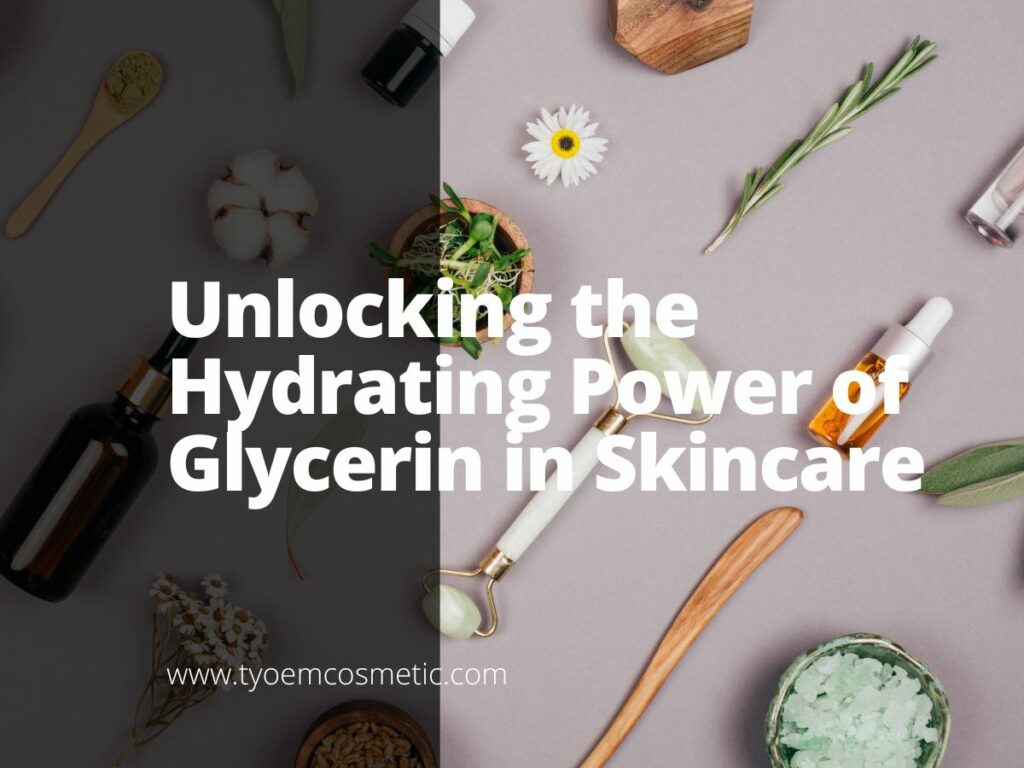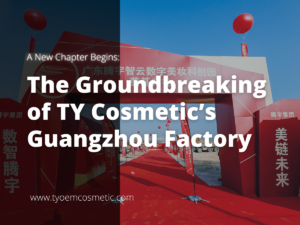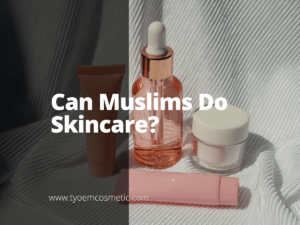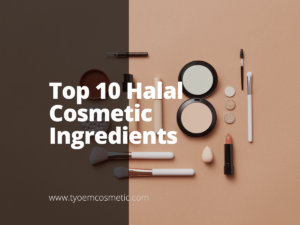Have you ever wondered what makes your skincare products exceptionally hydrating? This simple yet powerful component is a game-changer for maintaining skin moisture.
As a skincare expert, I understand the critical role ingredients play in product efficacy. Glycerin, with its unique properties, stands out as a foundation in hydrating formulations.
Glycerin is a fundamental element in skin care. It is essential for its moisture-attracting and retaining properties, making it a key ingredient in daily moisturizers or specialized treatments.
In this ultimate guide, we will delve into the science behind glycerin, explore its benefits, and understand how it can be optimally used in skincare formulations to meet the needs of all clients.
Read on to unlock the secrets of this hydrating powerhouse.
1. Understanding Glycerin
Glycerin, or glycerol, is a colorless, odorless liquid known in skincare for its hydrating properties. As a natural humectant, it draws moisture from the air into the skin’s outer layer and forms a protective barrier to prevent moisture loss. This makes it a staple in moisturizing products.
Its gentle nature allows for compatibility with various skin types, including sensitive and acne-prone skin, ensuring hydration without irritation or clogging pores. In skincare formulations, glycerin’s true strength lies in its ability to enhance the absorption and efficacy of other ingredients.
This active effect not only maximizes the benefits of the product but also caters to a diverse range of skincare needs, making glycerin a versatile and indispensable ingredient in the industry.
2. Benefits of Glycerin in Skin Care
After building on an understanding of glycerin, let’s examine its numerous benefits. This simple compound transforms skin care products into potent hydrating solutions. Here are the benefits of glycerin in skin care:
- Intense Hydration: Glycerin is a powerful humectant, which means it has the ability to attract water molecules from the environment into the skin. This property ensures deep hydration, particularly beneficial for dry and dehydrated skin types.
- Enhanced Skin Barrier: By forming a protective layer over the skin, glycerin helps to prevent moisture loss. This barrier not only retains hydration but also shields the skin from environmental stressors, contributing to overall skin health.
- Soothing Effect: Glycerin is known for its soothing properties. It can calm irritated skin, making it a go-to ingredient in products designed for sensitive or inflamed skin conditions.
- Improves Skin Texture: Regular use of glycerin-infused products can lead to smoother, softer skin. For example, a glycerin-based hand cream can transform rough, dry hands into a smoother and more supple state.
- Non-comedogenic Nature: Unlike some hydrating agents that can clog pores, glycerin is non-comedogenic. This makes it suitable for acne-prone skin, providing hydration without exacerbating acne issues.
- Compatibility with Active Ingredients: Glycerin works well with other active ingredients, enhancing their absorption and effectiveness. This compatibility makes it an ideal component in complex skincare formulations.
- Anti-Aging Properties: By maintaining hydration and improving skin barrier function, glycerin indirectly helps in reducing the appearance of fine lines and wrinkles, contributing to a more youthful complexion.
Understanding glycerin’s role in skin care is indispensable. Its ability to hydrate, soothe, and improve skin health while being gentle and compatible with various skin types and ingredients makes it a valuable asset in any skincare regimen.
3. Glycerin for Different Skin Types
After recognizing glycerin’s benefits, it’s important to consider how it interacts with different skin types. Glycerin’s versatility in skincare is unmatched, making it a key ingredient. Here’s a breakdown:
Dry Skin
For those with dry skin, glycerin acts as a hydration hero. Its humectant properties draw moisture into the skin, providing much-needed hydration. This can be particularly beneficial in harsh climates where skin tends to lose moisture rapidly. Products like TY Cosmetics’ hydrating serums often incorporate glycerin to ensure deep and lasting hydration, making them a staple for dry skin care.
Oily Skin
Contrary to popular belief, oily skin also needs hydration, and glycerin is a perfect fit. It provides necessary moisture without adding oiliness or causing breakouts. Its non-comedogenic nature ensures that pores remain unclogged, a vital consideration for oily skin types. Maintaining the skin’s hydration balance prevents the overproduction of oil, often a response to dehydration.
Sensitive Skin
Sensitive skin benefits greatly from glycerin’s gentle and soothing properties. It hydrates without causing irritation, a common challenge with many skincare ingredients. Glycerin’s ability to form a protective layer also shields sensitive skin from environmental stressors that can trigger reactions. For example, a glycerin-based facial mist can offer instant relief and hydration to sensitive skin, without the risk of irritation.
Combination Skin
Combination skin, characterized by both oily and dry areas, requires a balanced approach, and glycerin fits the bill perfectly. It hydrates dry patches while not exacerbating oiliness in other areas. Its adaptability makes it ideal for this skin type. Incorporating glycerin into a skincare routine for combination skin can help achieve a more balanced and even complexion.

4. Glycerin in Various Skin Care Products
Understanding how glycerin benefits different skin types leads to its application in a range of skincare products. Let’s see how glycerin is utilized in different skincare products:
Moisturizers
In moisturizers, glycerin is a star player. It not only provides immediate hydration but also ensures sustained moisture retention. This is particularly beneficial for face and body moisturizers, where long-lasting hydration is key. Glycerin’s ability to draw moisture from the environment keeps the skin plump and hydrated throughout the day. Glycerin works in tandem with other moisturizers and blockages to build the skin’s barrier.
Cleansers
Glycerin is also a common ingredient in cleansers. Unlike harsh surfactants that can strip the skin of its natural oils, glycerin-based cleansers gently remove impurities while maintaining the skin’s moisture balance. This makes them ideal for all skin types, including sensitive skin. This attribute is particularly important for maintaining healthy skin, including increased oil production and irritation.
Serums
Serums, known for their concentrated active ingredients, often include glycerin to enhance penetration and efficacy. Glycerin’s humectant properties help to transport these actives deeper into the skin, maximizing their benefits. This is evident in products like TY Cosmetics’ advanced serums, where glycerin plays a crucial role in delivering active ingredients.
Masks
In masks, glycerin acts as a hydration booster. Whether in sheet masks, overnight masks, or wash-off formulas, glycerin helps to lock in moisture and rejuvenate the skin. Its ability to draw water into the skin makes it particularly effective in hydrating masks, leaving the skin feeling soft and supple. A glycerin-infused overnight mask can work wonders in restoring skin’s moisture levels while you sleep.
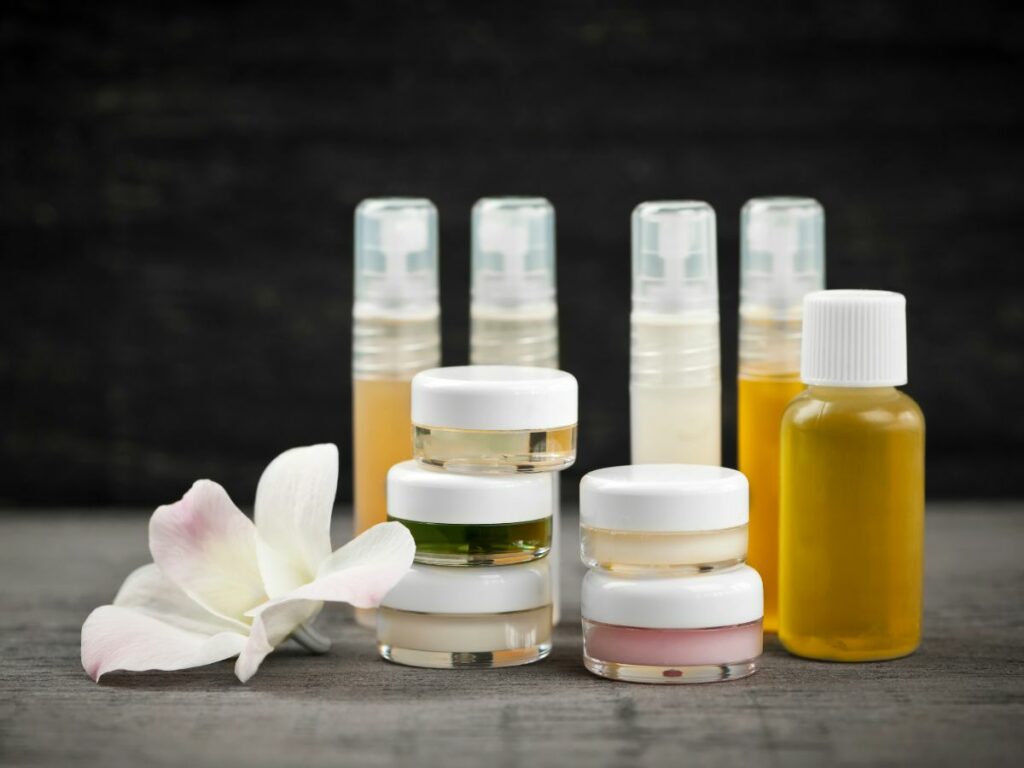
5. Comparing Glycerin with Other Humectants
With a clear picture of glycerin’s role in diverse skincare products, it’s useful to compare it with other humectants. This can help in choosing the right products for specific skin needs. Here are the key comparisons between glycerin and other popular humectants:
| Humectant | Glycerin | Hyaluronic Acid | Propylene Glycol | Sorbitol |
| Source | Plant oils or synthetic | Biofermentation or synthetic | Petroleum derivative | Fruits and seaweed |
| Moisture Attraction | Strong | Very strong | Moderate | Moderate |
| Skin Penetration | Surface layer | Varies (low to high molecular weight) | Deep penetration | Surface layer |
| Feel on Skin | Non-greasy, light | Varies (light to rich) | Slightly sticky | Light |
| Suitability for Skin Types | All, especially dry and sensitive | All, especially aging skin | Oily and combination | Dry and sensitive |
| Comedogenicity | Non-comedogenic | Non-comedogenic | Low risk | Non-comedogenic |
| Synergy with Other Ingredients | High | Moderate | High | Moderate |
Understanding these differences can guide consumers and skincare formulators in making informed decisions about product ingredients and formulations.
6. Potential Side Effects and Considerations
After knowing the comparisons between glycerin and other humectants, like any skincare ingredient, it comes with potential side effects and considerations. Here are some things to keep in mind:
Potential Side Effects
- Over-Hydration in Humid Climates: In extremely humid conditions, glycerin can over-hydrate the skin by drawing too much moisture from the air. This can lead to a feeling of heaviness and stickiness on the skin.
- Dehydration in Dry Climates: Conversely, in very dry environments, glycerin may draw moisture from the deeper layers of the skin instead of the air, potentially leading to dehydration. This effect is similar to using a glycerin-heavy lotion in a desert climate, where it might exacerbate dryness rather than alleviate it.
- Allergic Reactions: Although rare, some individuals may experience allergic reactions to glycerin. Symptoms can include redness, itching, or rash. It’s crucial for those with sensitive skin or allergies to patch test any new product containing glycerin.
- Interaction with Other Ingredients: Glycerin can interact with certain ingredients in skincare products, potentially reducing effectiveness or causing irritation. It’s important to be aware of the ingredient combinations in your skincare routine.

Considerations
- Concentration Levels: The concentration of glycerin in a product can impact its effectiveness and suitability for different skin types. Higher concentrations are more effective for dry skin but may feel too heavy for oily skin.
- Product Formulation: The overall formulation of the product, including the presence of other humectants, emollients, and occlusives, can influence how glycerin behaves on the skin. It’s essential to consider the product as a whole rather than focusing solely on glycerin.
- Skin Type and Needs: Your skin type and specific needs should guide your choice of glycerin-containing products. For instance, someone with oily skin might opt for a lightweight, glycerin-based serum rather than a heavy cream.
- Environmental Factors: The climate and environment you live in can affect how glycerin works on your skin. In dry climates, it’s advisable to use glycerin-based products in combination with other moisturizing ingredients to prevent potential dehydration.
Tailoring your skincare choices to your specific skin type, environmental conditions, and the overall formulation of the products can help maximize the benefits of glycerin while minimizing any risks.
7. 4 Tips for Choosing the Right Glycerin Products
According to VMR, the Glycerin Market size was valued at USD 2.33 Billion in 2021 and is projected to reach USD 3.67 Billion by 2030. Let’s break down some tips to help you make the best choice:
#1 Formulations for Target Markets
When selecting glycerin products for your inventory, assess the overall formulation to ensure it meets the needs of your target market. Consider the balance of glycerin with other active ingredients, ensuring they are suitable for a range of skin types. Products with higher glycerin concentrations cater to dry skin, while those with lower concentrations are ideal for oily or combination skin.
#2 Free From Reactants
In starting a skincare line, prioritize glycerin products that are free from common irritants like alcohol, fragrances, and dyes. This approach is particularly important for lines targeting sensitive skin. Offering hypoallergenic or non-comedogenic options can appeal to a wider audience, including those with reactive skin, enhancing your brand’s inclusivity and market reach.
#3 Glycerin Concentration
Evaluate the glycerin concentration in products to diversify your skincare range. High-concentration glycerin products are excellent for intensive hydration lines, while lower concentrations are more suitable for light, everyday-use products. This strategy allows your business to offer tailored solutions for different skin hydration needs, increasing the appeal of your product line to various client segments.
#4 Evaluate Product Compatibility
Ensure that the glycerin-based products to choose from are compatible with other items in the skincare range in your business. Products should complement each other. This compatibility is crucial for businesses looking to offer complete skincare solutions, as it encourages clients to purchase multiple products from your line, enhancing loyalty and increasing sales.
Dive Deeper Into Our Resources
Interested in discovering more? Gain instant access to our diverse range of products:
For some insightful reads, we’ve curated a list of recommended articles just for you:
Still haven’t found what you’re looking for? Don’t hesitate to contact us. We’re available around the clock to assist you.
Conclusion
We can therefore conclude that Glycerin’s role in skincare is essential, offering hydration and compatibility across various skin types and products. This guide aims to help you understand its benefits and make informed choices for your skincare needs.
For personalized advice and a range of high-quality glycerin-infused products, consider exploring TY Cosmetics’ collection. Our expert team can guide you to perfect collaboration.
At TY Cosmetic, we take pride in our reputation as experts in Skincare Formula. If you’re aiming to enhance your brand with customized skincare products, we are ready to turn your vision into reality. Reach out to us to discover personalized skincare solutions designed specifically for you!


